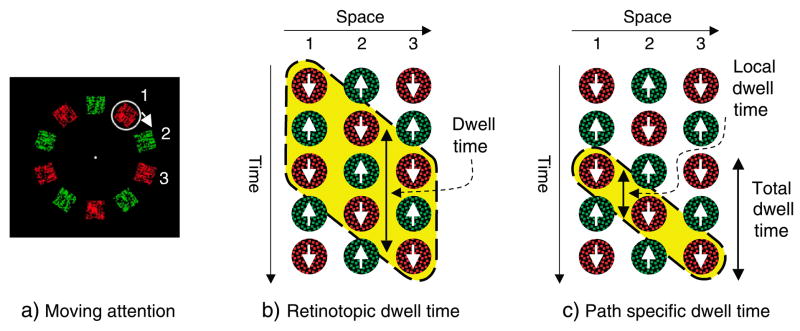Figure 14.
(a) Attention sampling from a moving location. (b) When attention is moving, it might open a channel at each location that must remain open for the minimum dwell time before closing again. With this retinotopic dwell time, alternating stimuli at each location would be integrated to the same extent with moving or stationary attention. (c) However, our data demonstrate that moving attention can offer substantial performance advantages, suggesting that the channel, once open, does not stay open in retinotopic coordinates, but stays open along the trajectory of motion. It may remain open only for a split second at each location (local dwell time as little as 50 ms in Experiment 3), allowing attention to sample very brief instants from a rapidly changing stream whose elements would be otherwise inaccessible to attention. Our data from accumulation experiments suggest that the total dwell time (the time during which an attention-dependent process is susceptible to interruption from a subsequent stimulus) is still long, about 300 ms, but the stimuli that can interrupt are only those falling on the attention trajectory.

